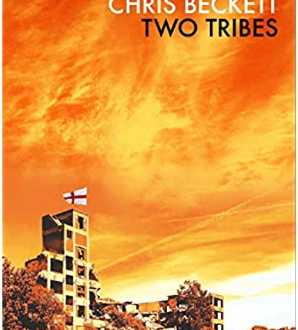This is a guest post by Alex Stein of falsedichotomies.com
Reviewing a book is always tricky. Reviewing a book when you’re mentioned throughout its pages is even trickier. As for reviewing a book that’s dedicated to you, you can understand my reluctance to put my fingers to the keyboard. Can I Bring My Own Gun? might not be the book to break the unique voice that is Seth Freedman to the world (that will surely happen with Binge Trading, due in a couple of months), but it’s a text so inextricably linked to my story, not to mention the story of anyone who’s made aliyah, that to avoid passing comment would have been plain cowardice.
Can I Bring My Own Gun? is ostensibly the story of Seth’s political evolution from Hampstead Garden Suburb stock-broker to Jaffa anti-Zionist, via a spell as a true believing soldier in the IDF. It’s also the narrative of a writer finding his voice by testing himself in a newly evolving medium – that of the internet talkback – a medium which seems to have been made for him. Combative and contradictory in equal measure, Can I Bring My Own Gun? one of the most lucid anti-occupation statements yet published, a totally unique analysis of Israel-Palestine, and a frustrating series of shards and ideas, unresolved questions and contradictory statements. Still, I suppose that’s ok – just look to the epigraph at the top of this blog…
We meet Seth just out of the army, sunbathing in inner-city Jerusalem and not knowing what to do next. His time in the stock-market means he doesn’t need to earn a decent day’s living, his only distractions are a daily swim and the occasional game of football. Encouraged by friends, he heads out to the West Bank to try and understand the reality of day-to-day life, to “tan” into a new political understanding (to use Seth’s lovely metaphor).
First-hand experiences are the name of the game. He eats wonderful haloumi cheese with oliver-pickers in the rural West Bank, takes part in youth dialogue groups in the Jerusalem hills, and gets taken on tours of Hebron by settlers. Slowly but surely, he comes to the conclusion that what he learnt about the conflict growing up didn’t match the reality on the ground. In the army, having arrested one rebellious young Palestinian too many, he asks himself the crucial question: “Was there another way; a way to engage with the Palestinians which wouldn’t compromise our security, but at the same time wouldn’t increase the animosity they felt towards us – the faceless oppressors in helmets and flak jackets?”
Over the course of his weekly excursions, Seth begins to answer this question, coming to the initial conclusion that Israel has to urgently end the occupation. As an anti-occupation text, it’s second-to-none, with Seth’s simple but flowing prose, forensic despite the lightness of touch, perfect for spelling out the brute realities of Israel’s dilemma. Har Homa is depicted as a juggernaut standing above the Palestinian village of Al-Nueman, the rabbit in the headlights. A right-wing protester is depicted reciting a litany of arguments against leftists like he’s playing bingo; the Holocaust is described as the Blue Suede Shoes of Jewish intellectual discourse, i.e. don’t mention it. These are brilliant and original similes, and I hope Seth will forgive me for pointing out that they make the occasional slips in the prose unforgivable – the markets are always bustling, the cigarettes are always being smoked languidly, the sun is always blazing.
Seth does not end his journey as an anti-occupation liberal Zionist. By the end, he is an avowed anti-Zionist, or at least that’s how he describes himself. It’s clear, however, that he still justifies Jews having rights to live in the Land of Israel, not to mention the importance of military or national service for all Israel’s citizens. The anti-Zionist label may endear him to the cyber-crowds on CIF, but it’s clear that he remains very much in the Zionist camp, albeit as a bit of a radical.
Above and beyond the politics, though, this book is about the author. It’s perhaps the first twenty-first century document describing what it’s like to be on the front-line of the new journalism, putting as much effort into the post-article comments as into the original piece itself. “Whatever mate, I write, you read,” Seth wrote to one critic following his first article on CIF, words he would later regret. By the end he’s reached an admirable modus vivendi with most of his readers, verbal braggadocio replaced with more reasoned argument, and a willingness to respond more decently to criticism. This is important. Sites like CIF are in many ways the future, and it is to be hoped that the discourse will improve itself accordingly.
“I was using Israel to answer my own cry for direction,” confesses Seth, an important admission. Many olim come here for essentially personally reasons, reasons for which Zionism can provide a useful mask. Can I Bring My Own Gun? provides a neat summation of the political journey of one oleh; it is to be hoped that Seth’s evolution will not stop here. If he focuses on his prose, Seth has the potential to become one of the great voices of this region, despite the occasional belligerence of his political positions. In the meantime, like Madoff victims in a New York court-room, we await the arrival of Binge Trader…


